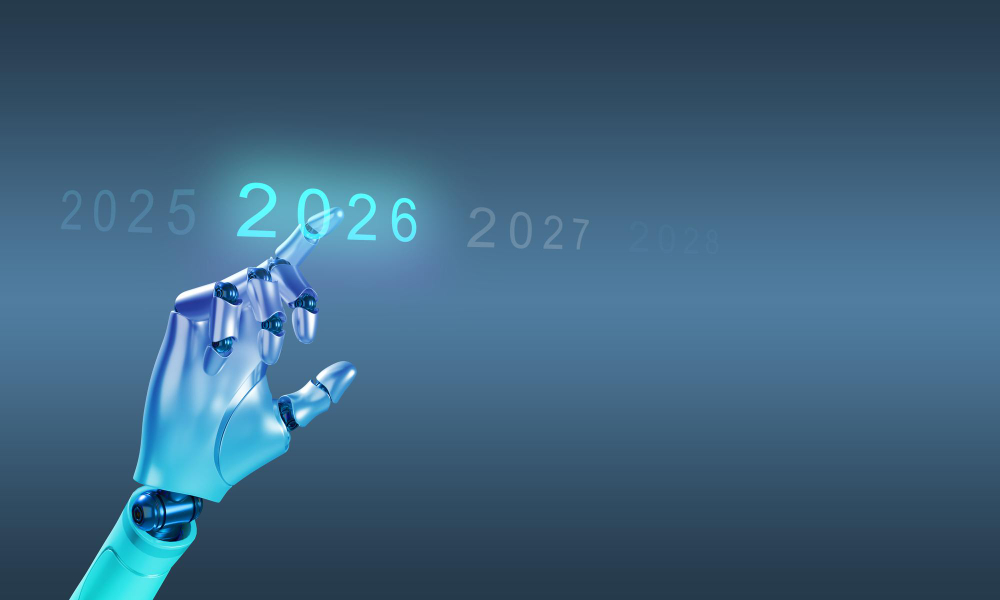- Automation
- October 28, 2025
Automation Trends in 2026: The era of intelligent efficiency

- Automation
- October 28, 2025
Automation Trends in 2026: The era of intelligent efficiency
As we move towards 2026, automation continues to redefine the way organizations operate, innovate, and deliver value. What started as a simple task automation process a few years ago has now evolved into a sophisticated ecosystem powered by AI, analytics, and intelligent systems. Businesses have moved past questioning the need for automation, they’re now focused on determining its optimal scale and the areas where it can drive maximum value.
In this blog, we try to identify the top automation trends that are expected to shape 2026, making life easier for business leaders, IT decision-makers, and digital strategists
Hyperautomation will be the standard
Hyperautomation is no longer a buzzword; it has become a business necessity. In 2026, organizations will move beyond isolated automation tools to integrate end-to-end systems that combine AI, machine learning, robotic process automation (RPA), and data analytics.
This shift will enable enterprises to automate not just repetitive back-office tasks but also help in complex decision-making processes that once required human intervention. With intelligent orchestration, hyperautomation platforms can analyze workflows, identify inefficiencies, and optimize operations in real time.
Companies in manufacturing and logistics are already using hyperautomation to predict equipment failures, manage supply chains autonomously, and reduce downtime. It has resulted in higher agility, lower operational costs, and improved business continuity.
AI-powered automation will enhance decision intelligence
Artificial Intelligence continues to play a crucial role in advancing automation. By 2026, AI-powered automation will dominate decision-making across industries. Unlike traditional rule-based systems, AI-driven automation can interpret data patterns, learn from outcomes, and make predictive or prescriptive decisions.
Enterprises are using this to streamline customer support, HR operations, and financial forecasting. For example, AI bots can now understand customer sentiment, prioritize tickets automatically, and resolve common issues without human involvement.
This evolution is leading to a new era of “decision intelligence,” where automation doesn’t just execute commands; it thinks, learns, and acts with precision.
Low-code and no-code platforms will democratize automation
One of the most transformative trends for 2026 will be the rise of low-code and no-code automation platforms. These platforms will empower non-technical business users to create automated workflows using visual interfaces and drag-and-drop tools.
As a result, the traditional dependency on IT teams willdecrease. Citizen developers, or business users with domain expertise, can now design and deploy automation solutions tailored to their specific needs.
This democratization of automation is expected to accelerate digital transformation in enterprises of all sizes. It will help organizations respond faster to market changes, improve collaboration between departments, and reduce development time dramatically.
Intelligent document processing
In 2026, intelligent document processing (IDP) is expected to gain traction as organizations strive to eliminate manual data entry and streamline document-heavy workflows. Powered by AI and natural language processing (NLP), IDP can extract, classify, and validate information from emails, forms, contracts, and invoices with remarkable accuracy.
Industries such as banking, insurance, and healthcare are already leveraging IDP to speed up claims, compliance checks, and onboarding processes. By automating document management, enterprises will not only reduce operational costs but also improve data accuracy and compliance.
IDP is quickly becoming the cornerstone of digital efficiency, bridging the gap between structured and unstructured data.
Process mining
Understanding how processes truly work within an organization is key to effective automation. In 2026, process mining tools will take center stage by providing data-driven insights into real business operations.
These tools capture event logs from enterprise systems, visualize workflows, and identify bottlenecks or redundant steps. When integrated with automation platforms, process mining enables continuous improvement, ensuring that automation initiatives align with actual business goals.
Companies adopting process mining are witnessing tangible returns such as more transparency, optimized processes, and faster transformation cycles.
Autonomous systems will expand beyond manufacturing
While automation has long been central to manufacturing, 2026 will see a broader expansion into sectors like logistics, agriculture, and even finance. Autonomous systems, ranging from drone-delivery to self-optimizing trading algorithms, are will become more reliable and scalable thanks to advancements in AI and edge computing.
Logistics companies are deploying AI-driven robots for warehouse management, while banks are using autonomous fraud detection systems that operate around the clock. These innovations will set new standards for operational speed and efficiency across industries.
Human-automation collaboration
Despite fears of job displacement, 2026 will carve a path for automation and human working together. This will be the start of an era of “collaborative automation,” where digital bots and employees complement each other’s strengths.
Routine, time-consuming tasks will be handled by bots, freeing employees to focus on strategy, creativity, and customer relationships.
The Future Outlook: A smarter, more connected automation era
Looking ahead, automation in 2026 and beyond will become more adaptive, context-aware, and seamlessly integrated across ecosystems. Organizations will move toward automation that not only reacts to data but also anticipates change, driven by predictive analytics, edge computing, and AI advancements.
Businesses that embrace this evolution early will gain a significant competitive advantage through faster decision-making, lower costs, and greater agility. As automation continues to blend human intelligence with machine precision, the next frontier of digital transformation is already taking shape.
The future is not just about automating work; it’s about reimagining what’s possible




